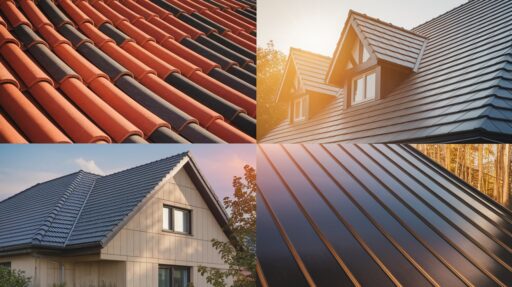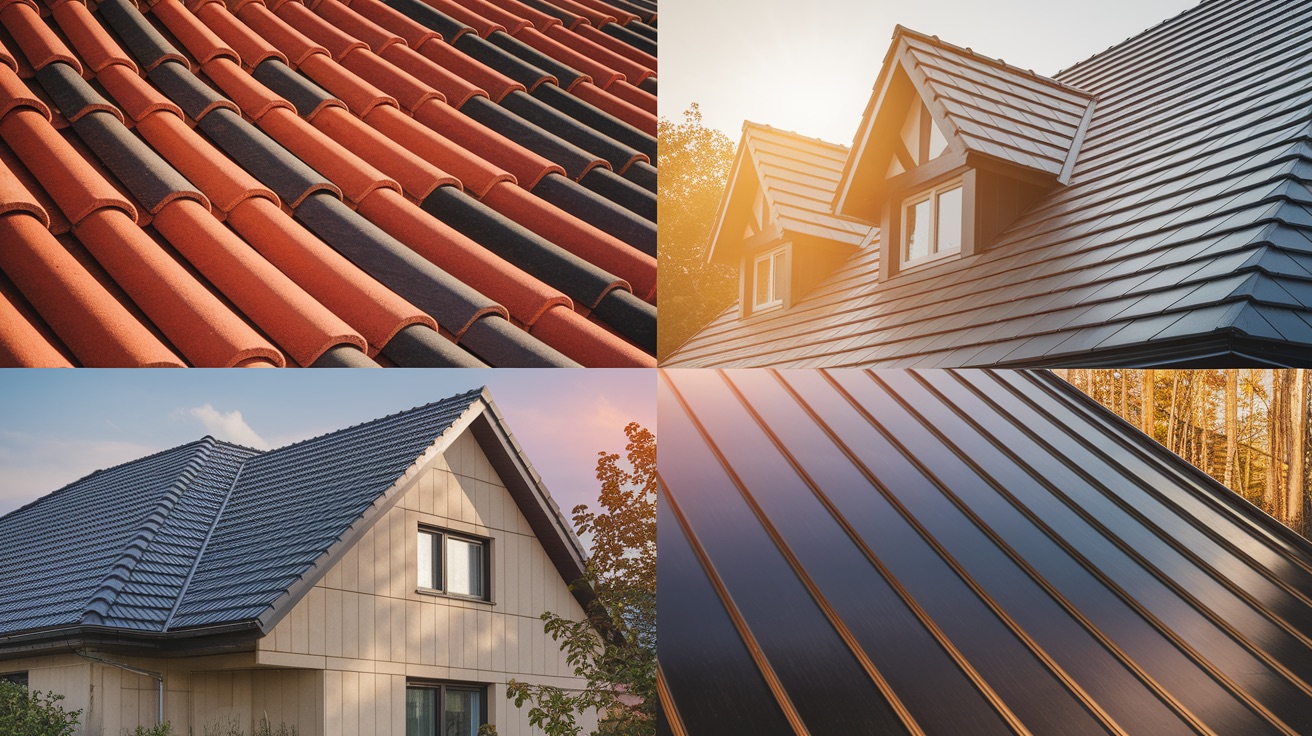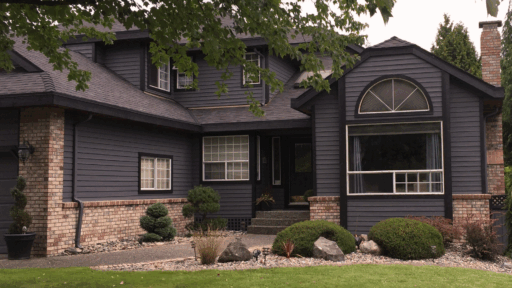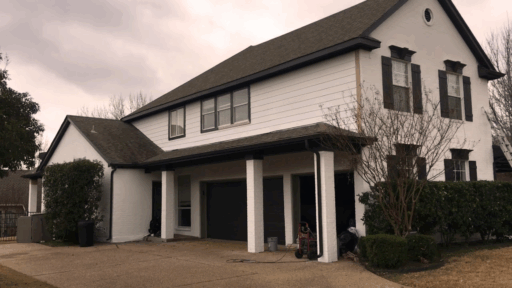Thinking of upgrading your roof? The tile you pick could mean the difference between big savings or costly surprises later.
A strong roof keeps your home safe and dry, adds beauty, and helps control your energy bills.
There are many roof tile types. Each one looks different, costs different, and works better in certain weather and places.
Choosing the right tile protects your family and saves money on future repairs, heating, or cooling.
Here, you’ll learn the best roof tiles, how much they cost, and which ones last the longest.
We’ll also show you how to care for your roof and avoid common mistakes people make when picking tiles.
Understanding Roof Tile Basics
Roof tiles are durable coverings that shield your home from weather damage while improving insulation.
Available in many shapes, colors, and finishes, they enhance both function and style.
They help your home stay cooler in summer and warmer in winter, which saves money on energy bills.
These tiles come in many shapes, sizes, colors, and textures to match different homes and styles people love.
Some tiles look smooth and modern. Others look classic, bold, or earthy.
You can find a style that fits perfectly.
Roof tiles do more than just protect your house, they make it look better and feel stronger for many years.
When homeowners choose tiles, they get lasting protection and peace of mind for their families.
Why are Roof Tiles Preferred Over Shingle Roofs?
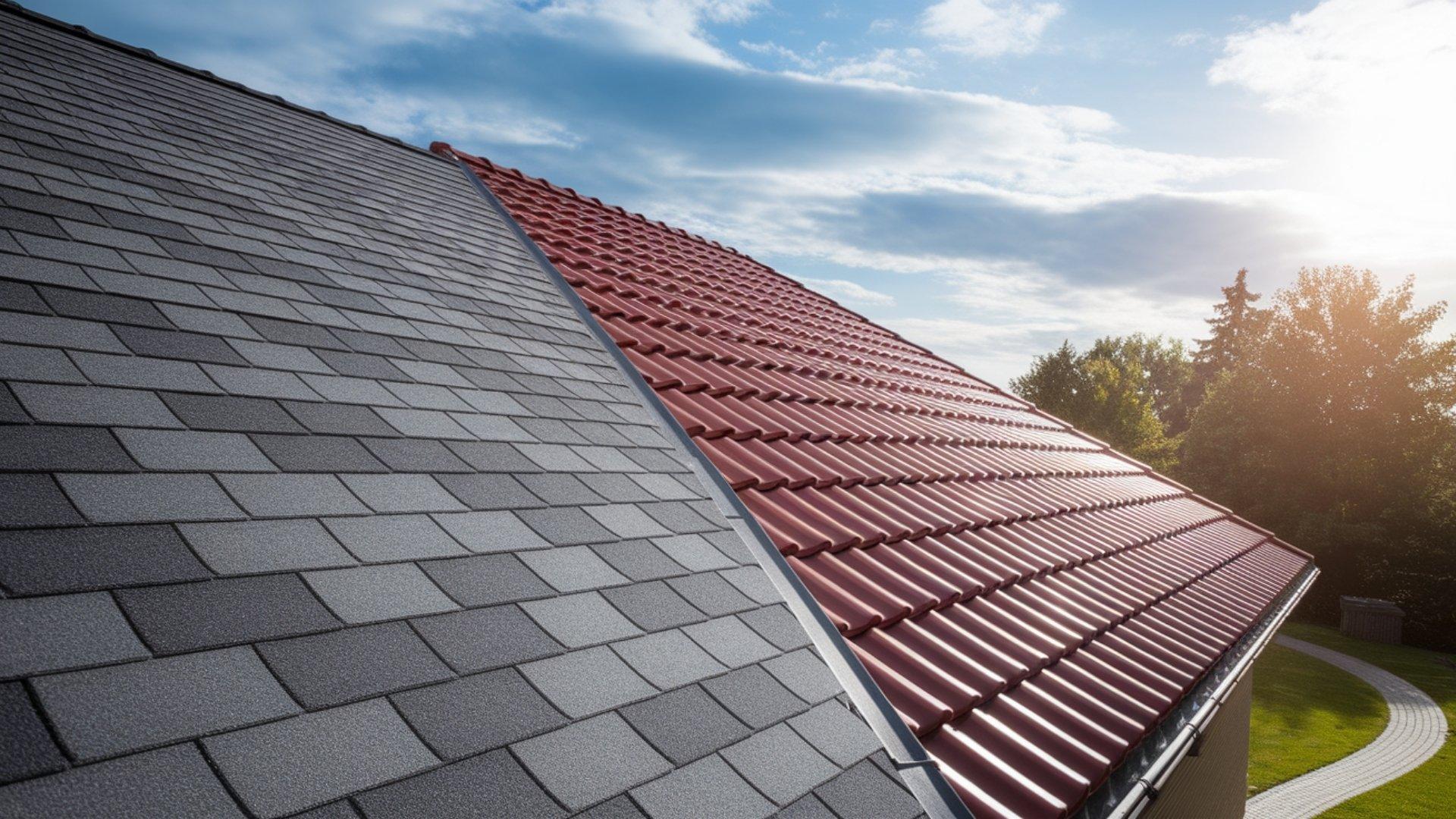
When you compare roofing options, roof tiles offer several clear advantages that make them a popular choice over traditional shingle roofing systems.
Here are the main roofing advantages that homeowners appreciate:
- Longer Lifespan: Tile roofing benefits include lasting 50-100 years compared to 15-30 years for shingles
- Better Weather Resistance: When you choose weather-resistant roofs with tiles, they handle strong winds, hail, and extreme temperatures better
- Superior Fire Protection: Most tiles offer excellent fire resistance compared to asphalt shingles
- Lower Maintenance: Roof longevity means fewer repairs and replacements over time for homeowners
- Higher Home Value: Quality tile vs shingles comparison shows tiles increase property resale value
- Energy Efficiency: When you install tiles, they provide better insulation, reducing your heating and cooling costs
While tiles cost more upfront, they deliver better long-term value through reduced maintenance and replacement needs.
Now that you know why tiles are great, let’s explore the most popular roof tile types people use in the USA.
Commonly Available Roof Tile Types in the USA
These are the most common roof tile types used across America that provide style to their home, while protecting it.
1. Concrete Roof Tiles
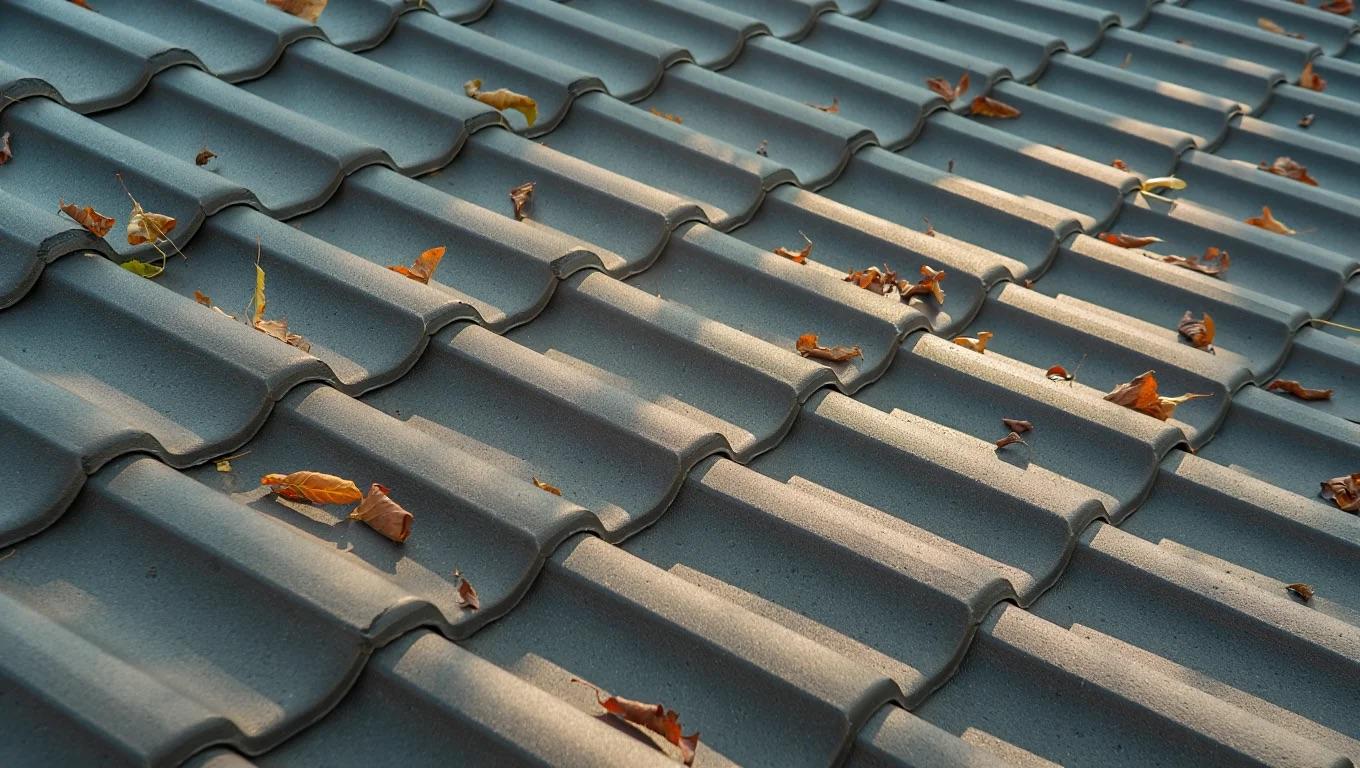
Durable, affordable, and available in a variety of styles and colors.
They offer a long lifespan and excellent fire resistance.
Concrete tiles provide superior insulation properties compared to traditional shingles, helping reduce energy costs year-round.
- Materials Used: Concrete, sand, cement
- Price:$3-$5 per sqft
- Maintenance Requirements: Inspection every 2-3 years
2. Clay Roof Tiles

Classic Mediterranean look, fire-resistant, and long-lasting.
Made from natural earth materials, clay tiles are completely eco-friendly and biodegradable.
They naturally regulate temperature and provide excellent thermal mass for energy efficiency.
- Materials Used: Natural clay, ceramic glazes
- Price: $2.50-$18 (According to material) per sqft
- Maintenance Requirements: Inspection every 3-5 years
3. Slate Roof Tiles
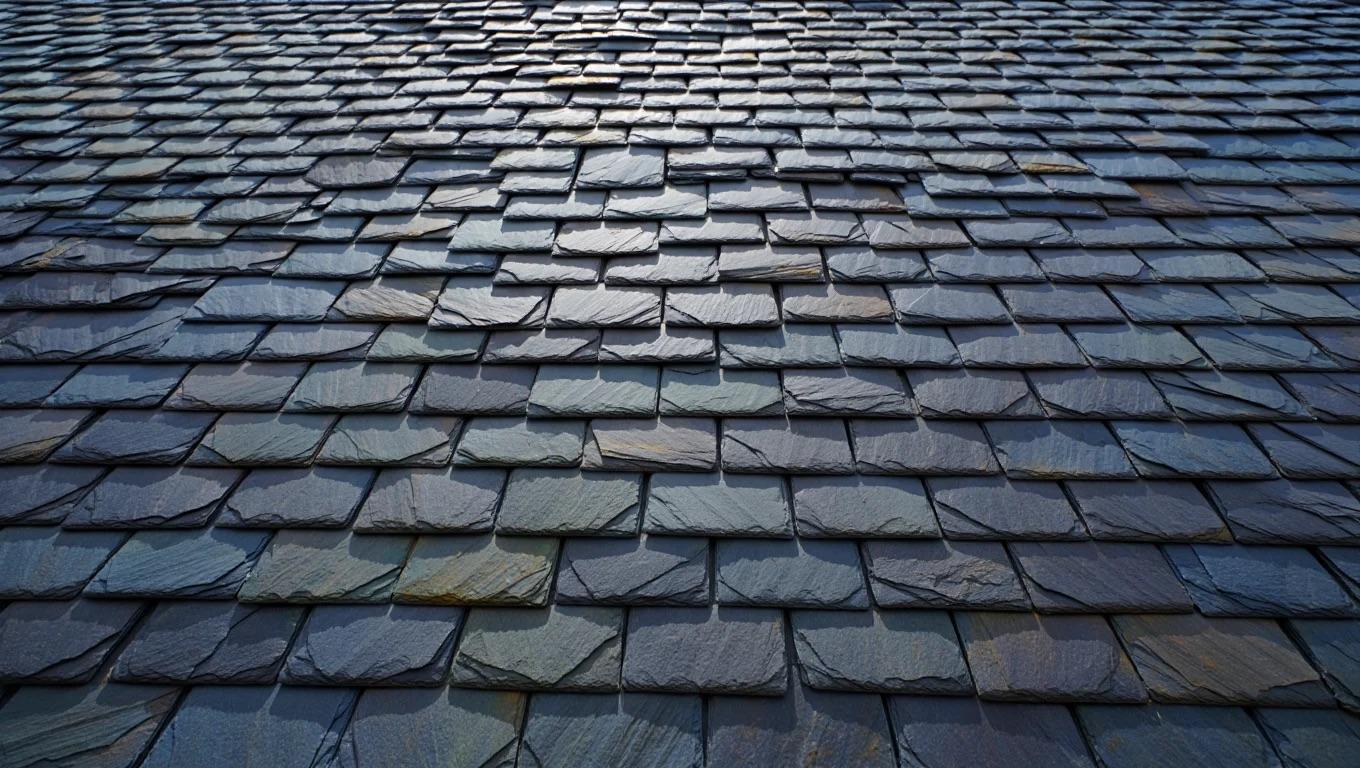
Natural stone with a unique appearance, extremely durable, and fire-resistant.
Slate is a premium, eco-friendly option made entirely from natural rock formations.
These tiles can last over 100 years, making them one of the most sustainable roofing choices available.
- Materials Used: Natural slate stone, quarried rock
- Price:$10-30 (Natural), $1.50-$12 (synthetic) per sqft
- Maintenance Requirements: Inspection every 5-10 years
4. Metal Roof Tiles
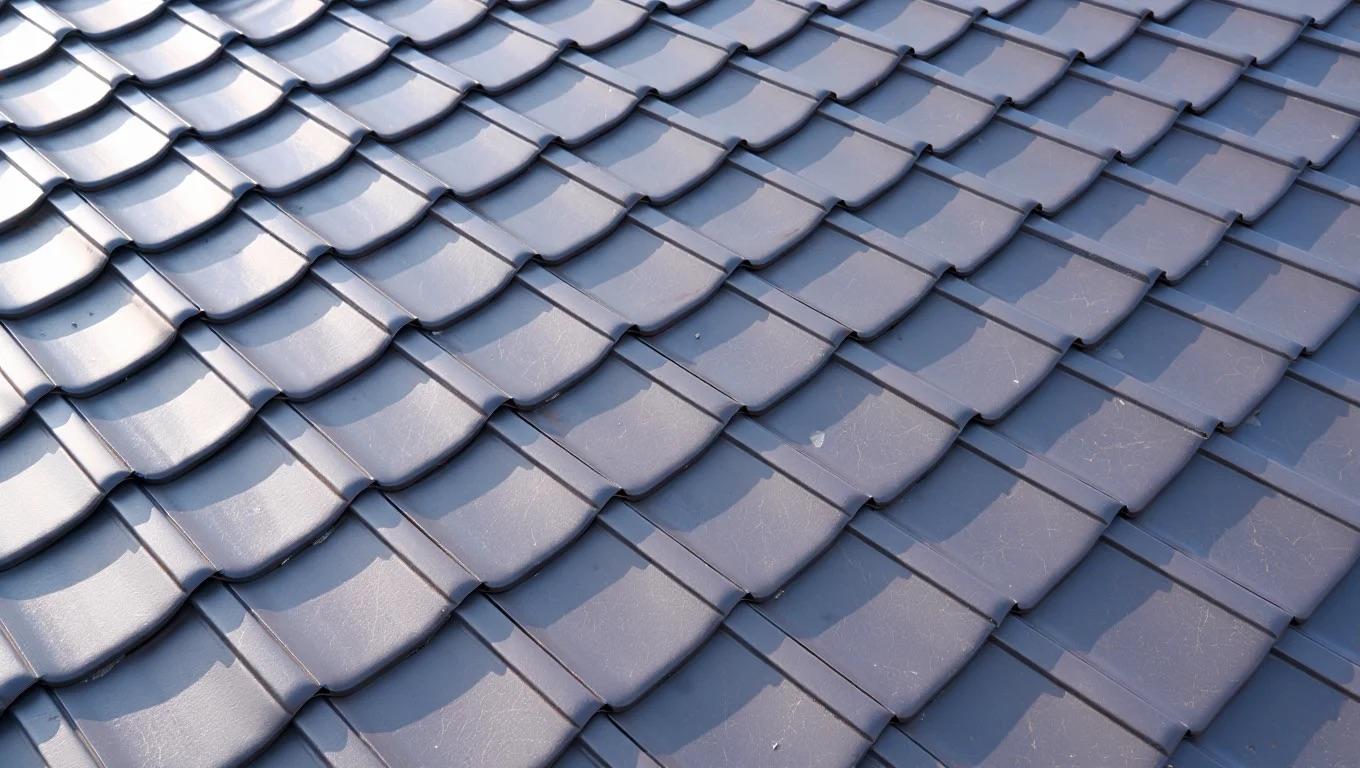
Lightweight and durable, made from materials like steel, aluminum, and copper.
Available in many styles, mimicking other roofing materials.
Metal tiles are 100% recyclable at the end of their lifespan and reflect heat effectively, reducing cooling costs significantly.
- Materials Used: Steel, aluminum, copper
- Price:$6 to $15 per sqft
- Maintenance Requirements: Inspection every 1-2 years
5. Composite (Synthetic) Tiles
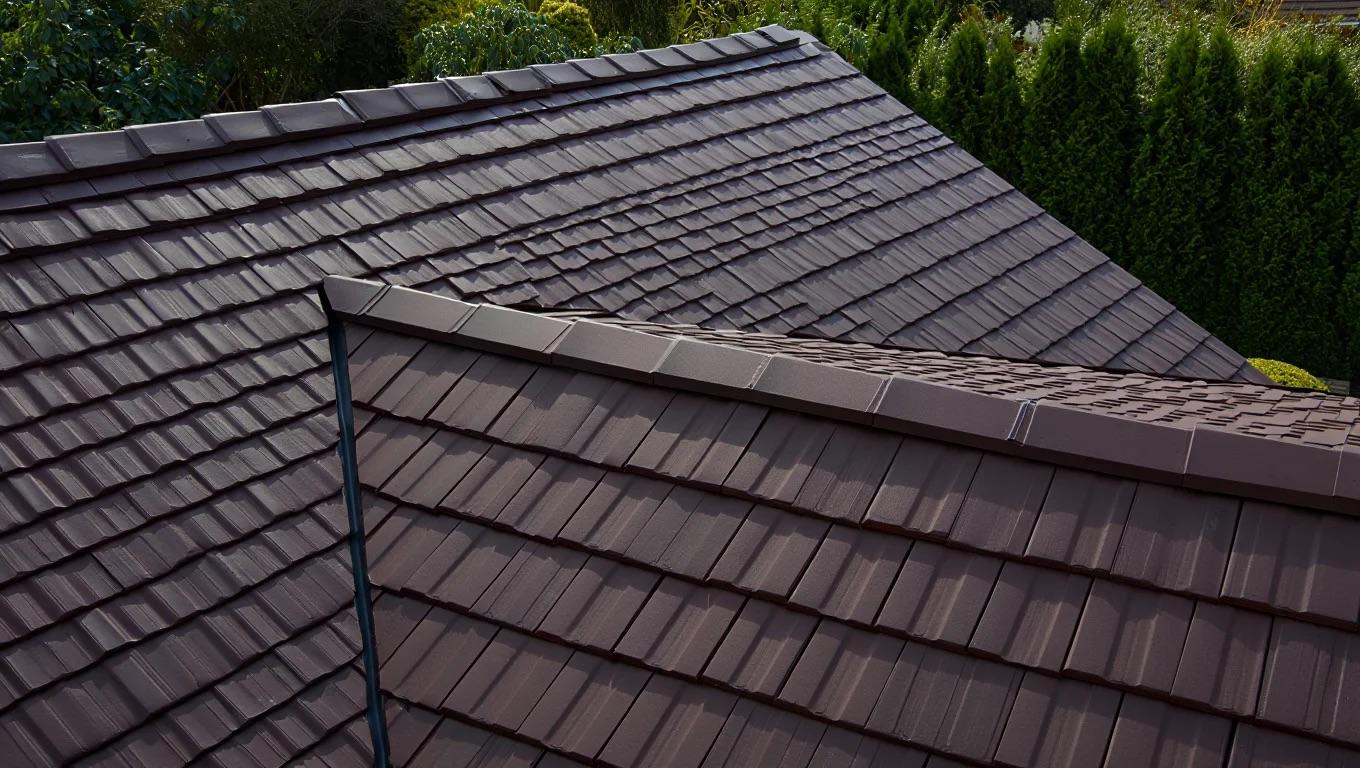
Made from polymers or plastics, these tiles imitate natural materials like slate or wood.
They’re lighter and easier to install than traditional materials.
Many composite tiles contain recycled materials, making them an environmentally responsible choice while offering superior impact resistance.
- Materials Used: Polymers, recycled plastics, rubber
- Price:$2 to $5 per tile
- Maintenance Requirements: Inspection every 2-4 years
6. Asphalt Shingles
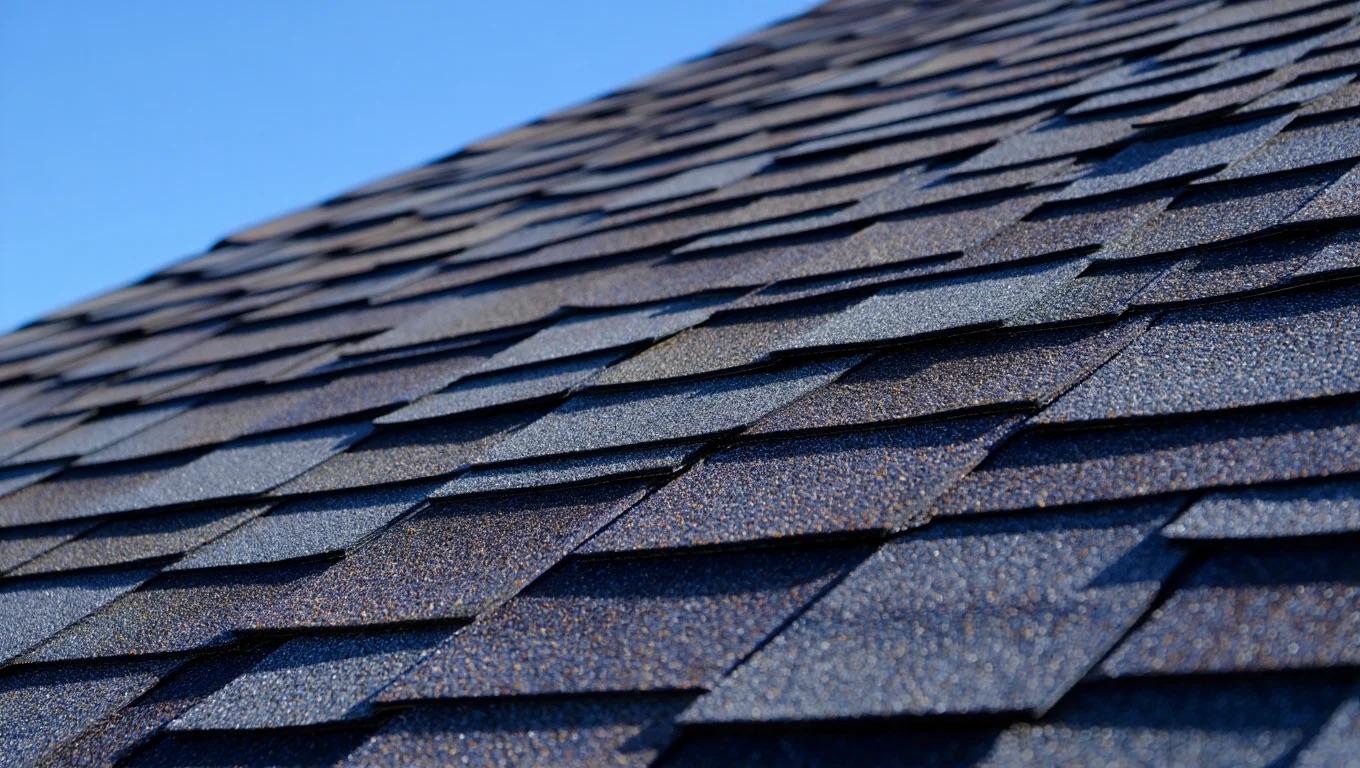
The most common roofing material in the USA, available in tile-like styles, is budget-friendly, and is easy to install.
Asphalt shingles offer the fastest installation time compared to other roofing materials, making them ideal for quick roof replacements and repairs.
- Materials Used: Asphalt, fiberglass mat, granules
- Price:$3.50 to $5 per sqft
- Maintenance Requirements: Inspection every 1-2 years
7. Solar Roof Tiles

Photovoltaic tiles that generate electricity while serving as roofing, less common but growing in popularity.
Solar tiles are the ultimate eco-friendly roofing solution, significantly reducing the carbon footprint while generating clean energy.
They provide dual functionality as both roof protection and power generation.
- Materials Used: Silicon, tempered glass, photovoltaic cells
- Price:$15 to $35 per sqft
- Maintenance Requirements: Inspection every 6 months
8. Wood Shake Tiles
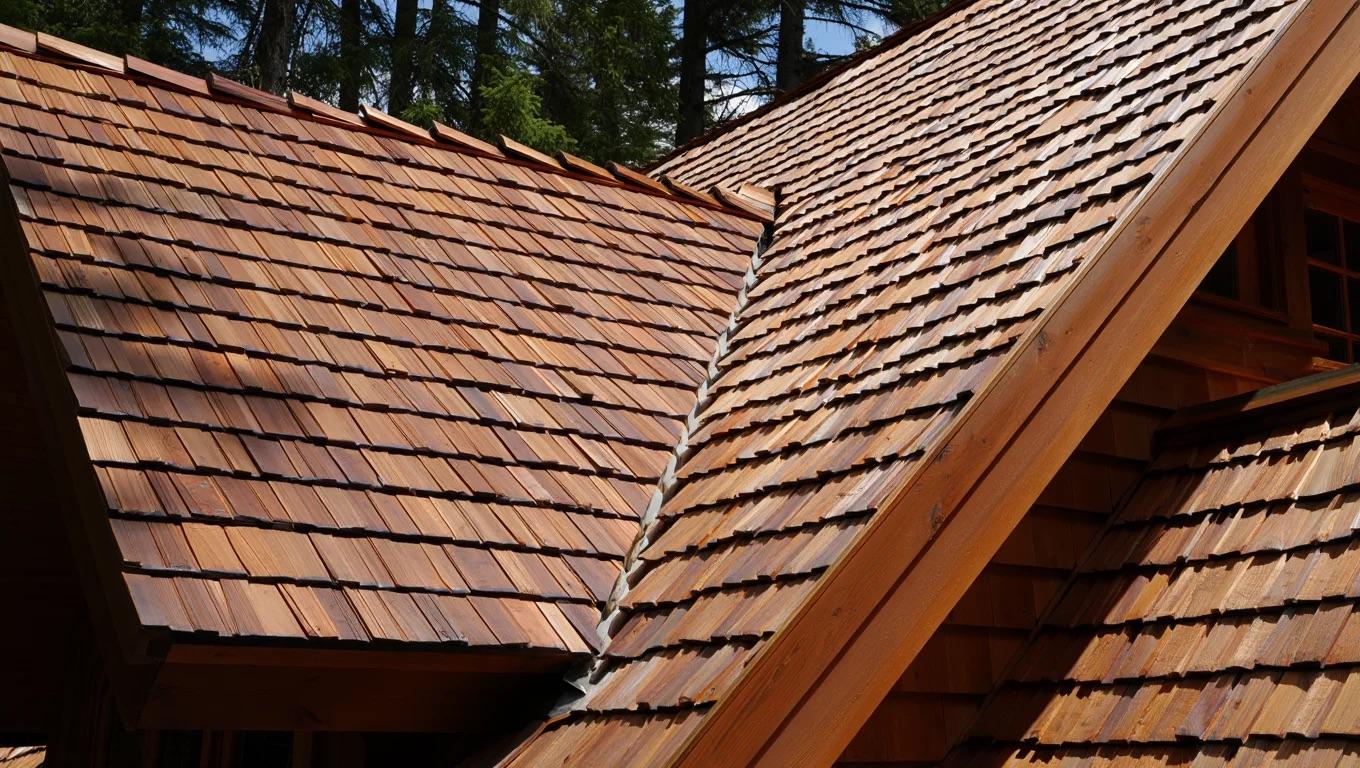
Rustic and natural-looking, wood shake tiles bring a warm, textured appearance perfect for cabin-style or countryside homes.
These tiles are typically made from cedar or redwood, offering moderate durability but requiring more upkeep due to moisture sensitivity.
When treated, they offer decent resistance to pests and fire.
- Materials Used: Cedar, redwood
- Price: $6 to $12 per sqft
- Maintenance Requirements: Inspection every 1-2 years, plus frequent sealing and treatment
9. Reclaimed or Recycled Tiles
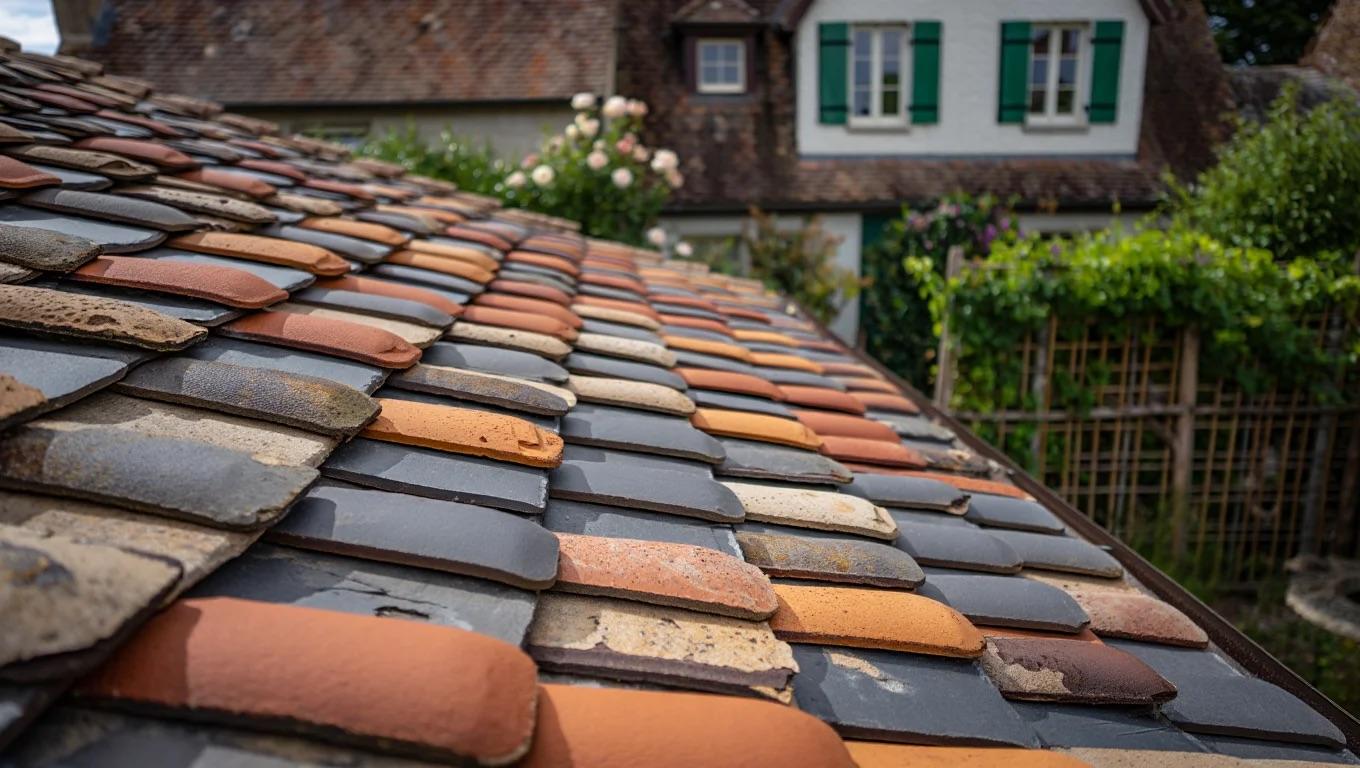
An eco-conscious option using salvaged or recycled tile materials.
These tiles reduce landfill waste while retaining visual charm and functionality.
Reclaimed tiles are often made from clay, slate, or even concrete, making them suitable for green-certified homes.
- Materials Used: Salvaged slate, clay, concrete
- Price: $2.50 to $4 per tile* (variable)
- Maintenance Requirements: Inspection every 2-3 years depending on original condition
10. Flat Roof Tiles
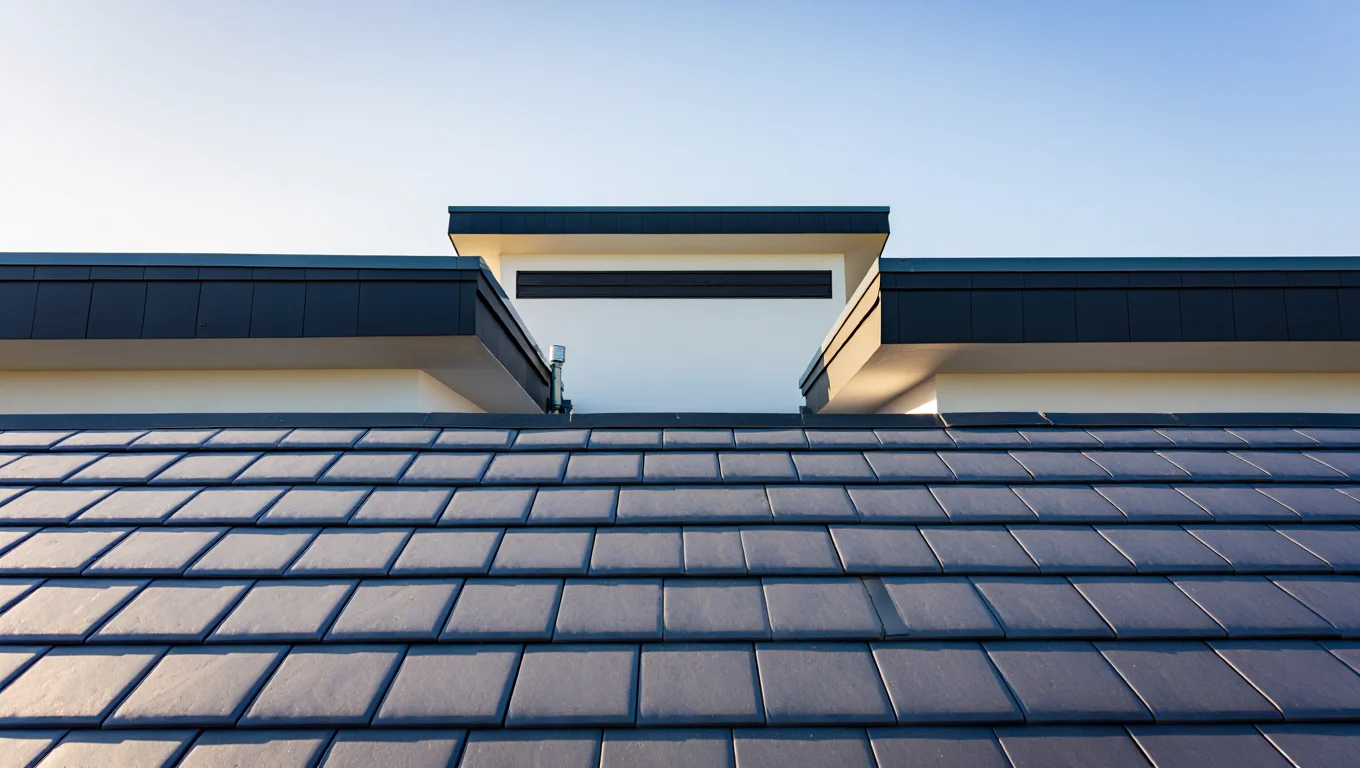
Flat tiles offer a clean, streamlined look perfect for modern or minimalist architectural styles.
They interlock neatly and lay flat, providing uniform lines and excellent water shedding.
Their versatility makes them popular in both urban and coastal areas. They are good for water management.
- Materials Used: Clay, concrete, synthetic
- Price: $2.50 to $18 per sqft (clay)
- Maintenance Requirements: Inspection every 2-3 years
Specialty and Style Variations
Specialty tile designs cater to specific constructive styles, adding a distinctive character to any home.
11. Spanish Tiles
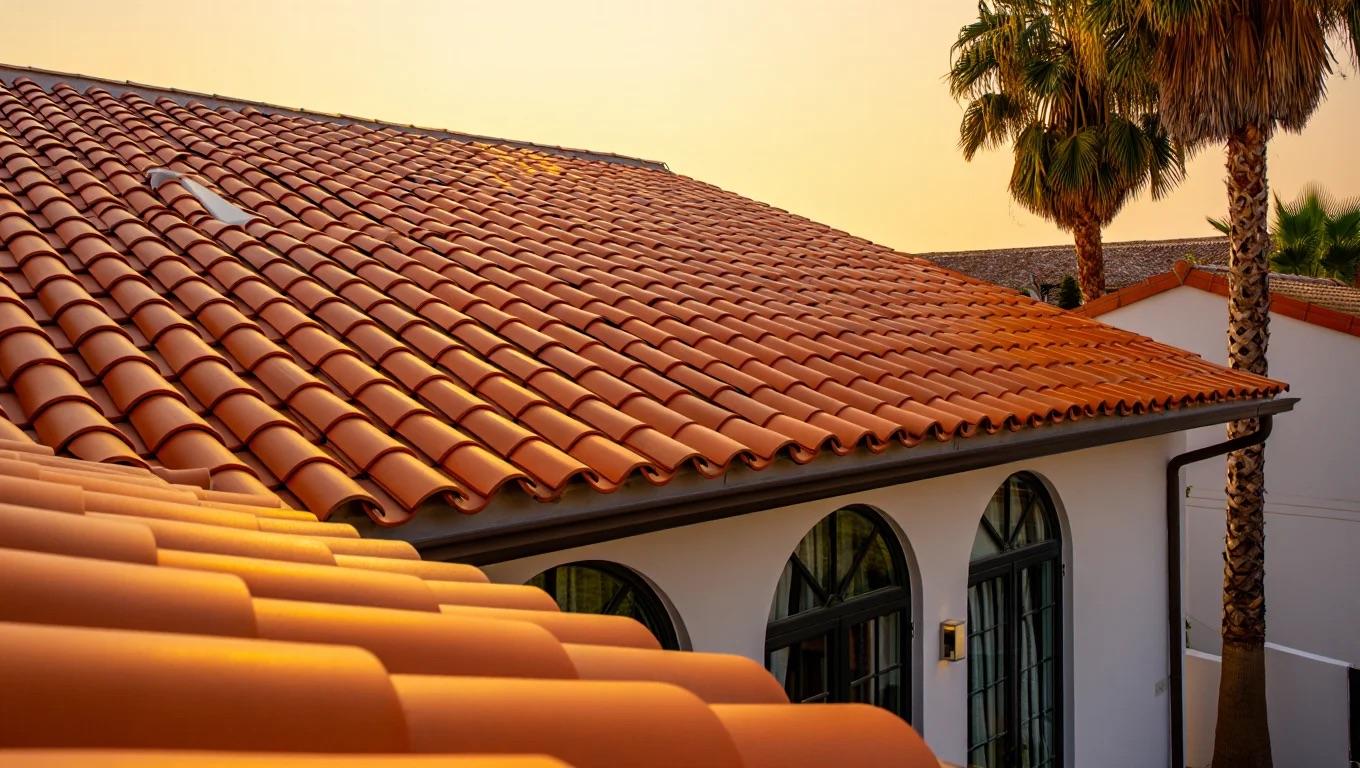
Curved tiles are usually made from clay or concrete, popular in Spanish and Mediterranean-style homes.
The distinctive curved design provides superior water drainage and ventilation compared to flat tiles.
Made from natural clay, these tiles are an eco-friendly and biodegradable option for sustainable building.
- Materials Used: Clay, concrete, ceramic
- Price:$4 to $14 per sqft (clay)
- Maintenance Requirements: Inspection every 3-4 years
12. French-Styled Tiles
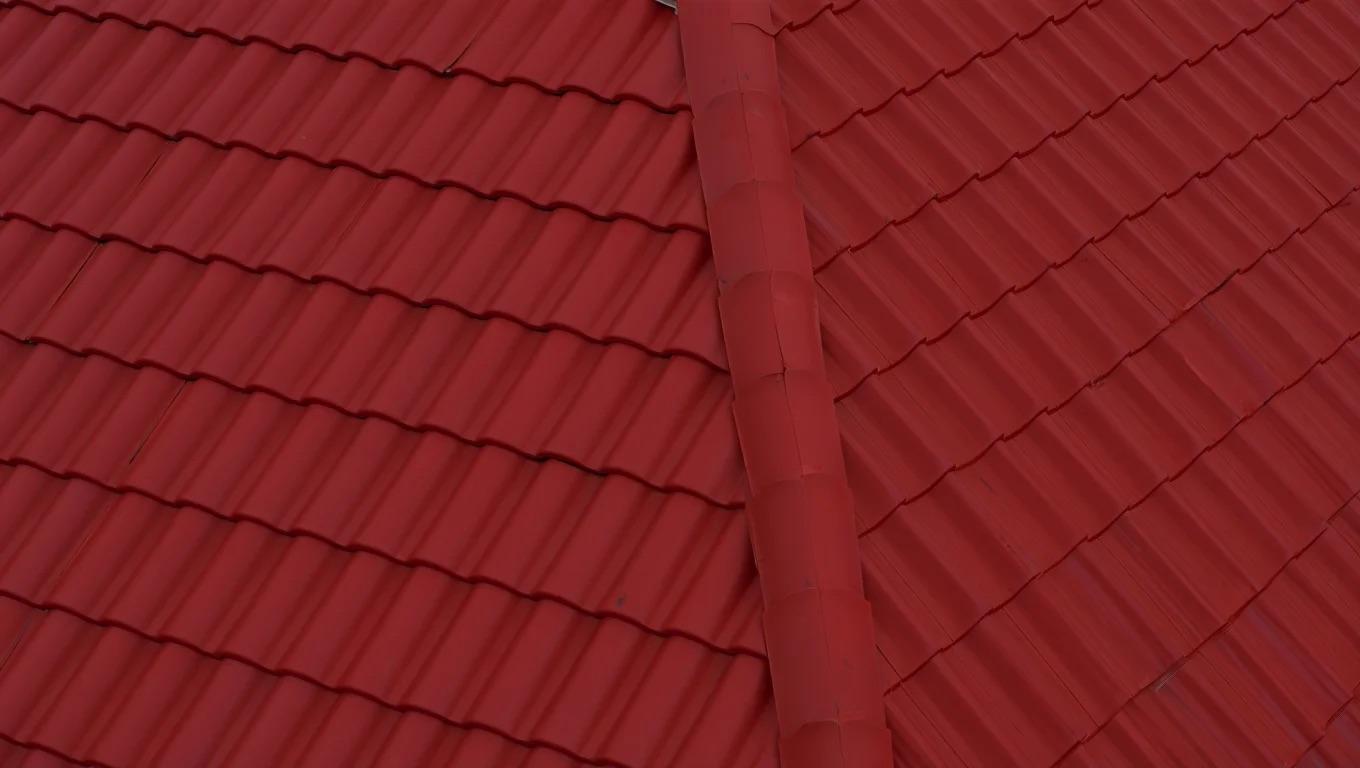
Refers to specific shapes or installation methods, available in various materials, including clay and concrete.
The precision-engineered interlocking system provides faster installation and superior weather sealing compared to traditional overlapping methods.
These tiles create exceptionally uniform and neat roof appearances.
- Materials Used: Clay, concrete, polymer
- Price:$8.50- $18 per sqft (clay)
- Maintenance Requirements: Inspection every 2-3 years
13. Copper Roof Tiles
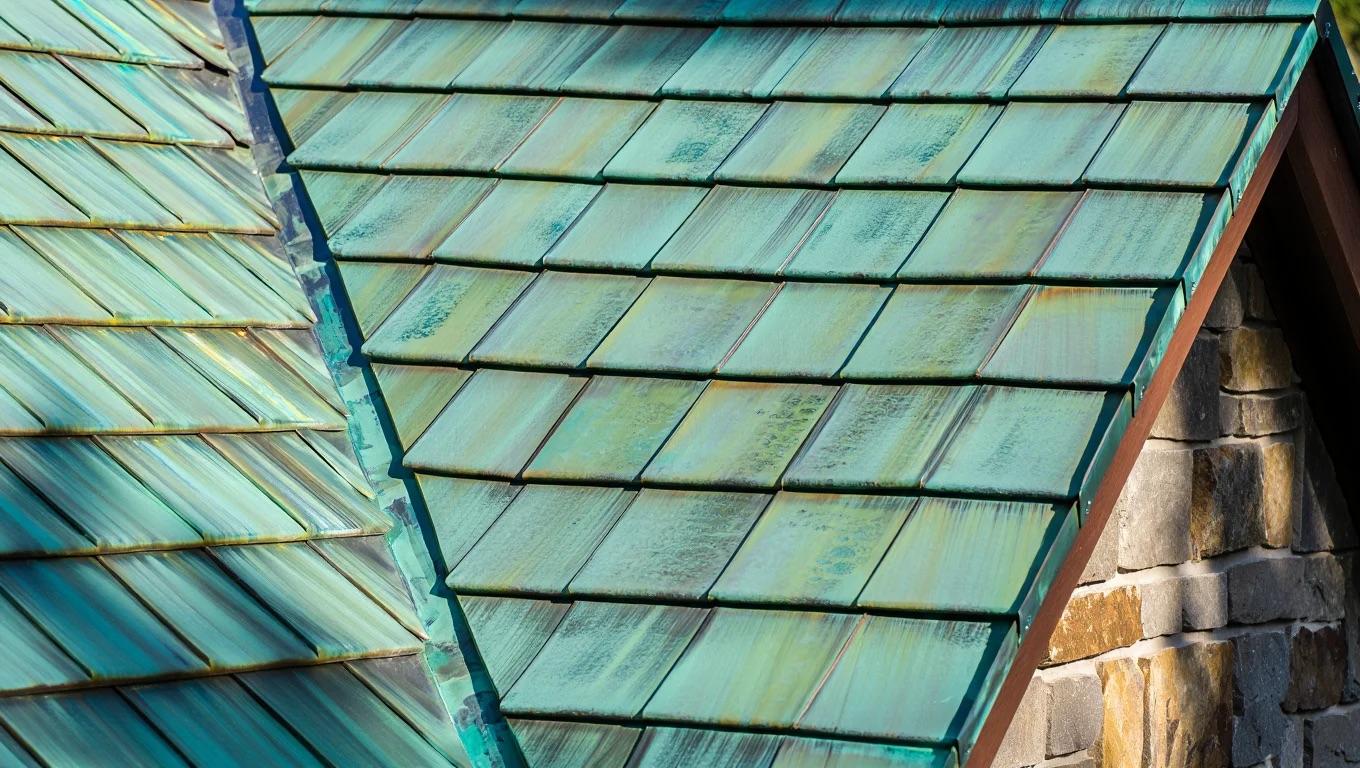
A premium metal roofing option, less common due to cost but prized for aesthetics and longevity.
Copper tiles are 100% recyclable and develop a beautiful natural patina over time.
They offer superior corrosion resistance compared to other metal roofing materials, lasting decades with minimal maintenance.
- Materials Used: Pure copper, copper alloys
- Price: $15 to $30 per sqft (average)
- Maintenance Requirements: Inspection every 3-5 years
Installation Difficulty and Time
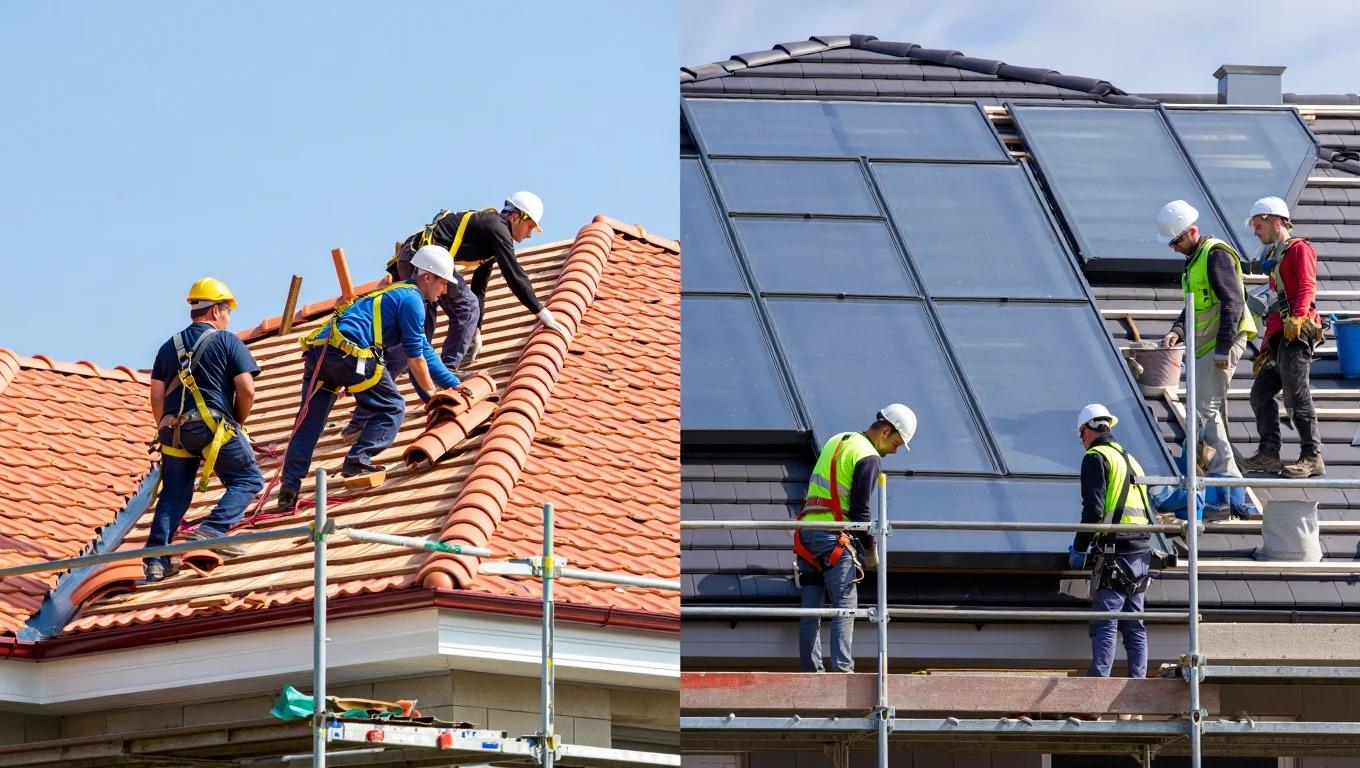
Installing a tile roof isn’t a one-size-fits-all job.
Each tile material and design comes with its own complexity, cost, and time requirements.
Here’s a breakdown of all tiles’ installation difficulty and estimated time.
| Tile Type | Installation Difficulty | Estimated Time | Labor Cost Estimate (per sq. ft) |
|---|---|---|---|
| Concrete Roof Tiles | Moderate | 6-10 days | $8 – $10 |
| Clay Roof Tiles | Moderate to High | 3-10 days | $8 – $10 |
| Slate Roof Tiles | High | 6-10 days | $10 – $15 |
| Metal Roof Tiles | Moderate | 2–3 days | $5 – $10 |
| Composite Roof Tiles | Easy | 1–2 days | $4 – $8 |
| Asphalt Shingles | Easy | 1 day | $3 – $5 |
| Solar Roof Tiles | Very High | 5–10 days | $15 – $25 |
| Wood Shake Tiles | Moderate | 2–4 days | $6 – $10 |
| Reclaimed or Recycled Tiles | Varies (moderate–high) | 3–6 days | $5 – $12 |
| Flat Roof Tiles | Easy to Moderate | 2–3 days | $4 – $8 |
| Spanish Tiles | High | 4–10 days | $7 – $12 |
| French-themed Tiles | Moderate | 3–5 days | $6 – $10 |
| Copper Roof Tiles | Very High | 5–7 days | $12 – $18 |
Knowing the complexity and time required helps you plan your budget and timeline more efficiently, especially if weather or renovation deadlines are factors.
Roof Tile Care and Maintenance Guide
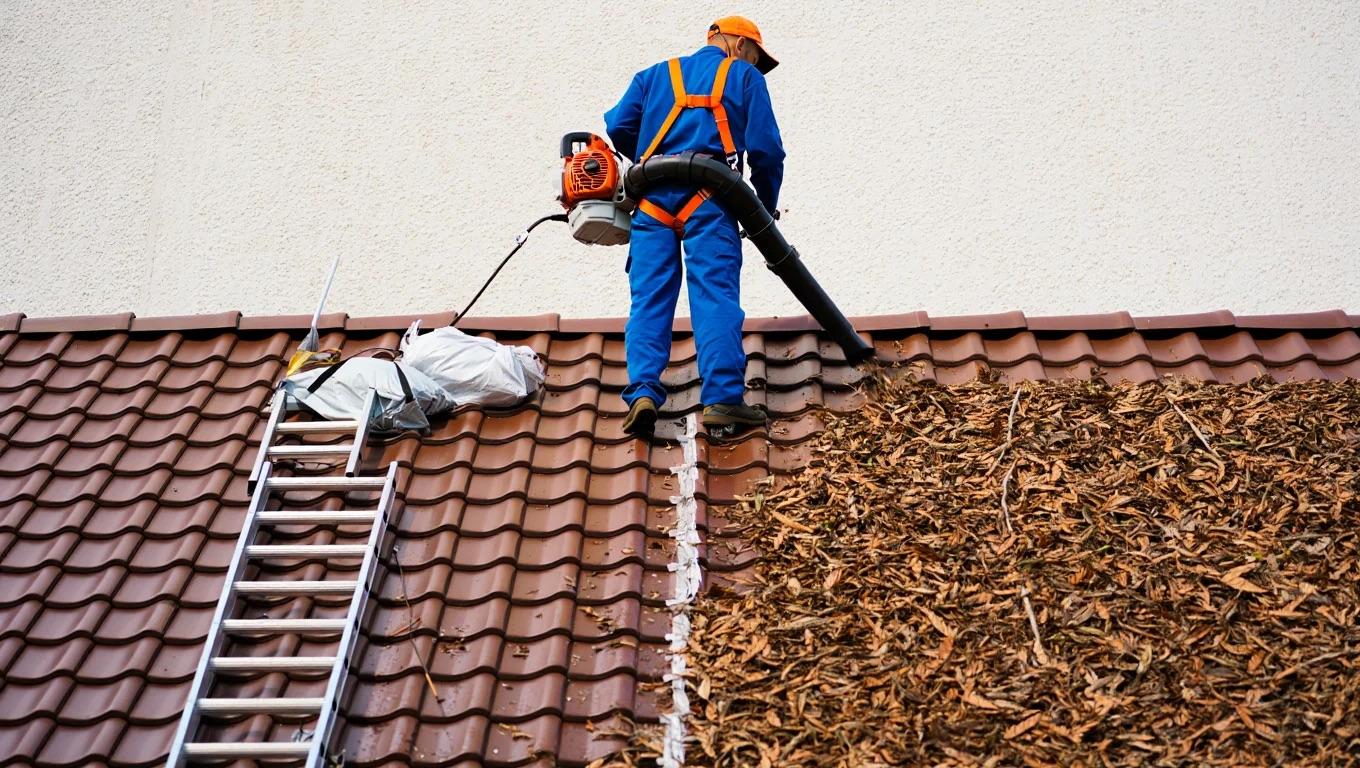
Proper maintenance extends the lifespan of roof tiles and prevents costly repairs.
Different tile materials require specific care approaches for optimal performance.
- Regular inspections: Check tiles twice yearly for cracks, loose pieces, or damaged areas
- Moss prevention: Remove moss growth promptly to prevent moisture damage and tile deterioration
- Professional cleaning: Schedule deep cleaning every 3-5 years to maintain appearance and functionality
- Immediate repairs: Replace broken or cracked tiles quickly to prevent water damage
- Gutter care: Keep drainage systems clear to prevent water backup and tile damage
- Tree trimming: Maintain trees near the roof to prevent branch damage during storms
- Warranties and lifespan guarantees: Check manufacturer warranties and coverage details for your tile type; timely inspections often help preserve warranty validity
Following these maintenance practices helps preserve your investment and ensures long-lasting roof protection.
How to Choose the Best Roof Tile for Your Home?

Choosing the right roof material requires more than just selecting what just looks good.
It’s about durability, efficiency, and safety.
Key factors to consider include climate suitability, structural capacity, budget planning, energy efficiency, and fire resistance.
Each of these plays a crucial role in how your roof performs and lasts over time.
To help guide your decision, start by asking yourself these important questions:
- “What’s your budget for both initial installation and long-term maintenance?”
- “How’s your local climate? Do you face extreme weather, high winds, or frequent temperature swings?”
- “Does your home’s structure support heavier materials like clay or slate?”
- “Which roof style best complements your home’s design?”
Answering these questions honestly and weighing all the above factors will help you choose the most suitable tile roof material for your needs.
Common Mistakes to Avoid
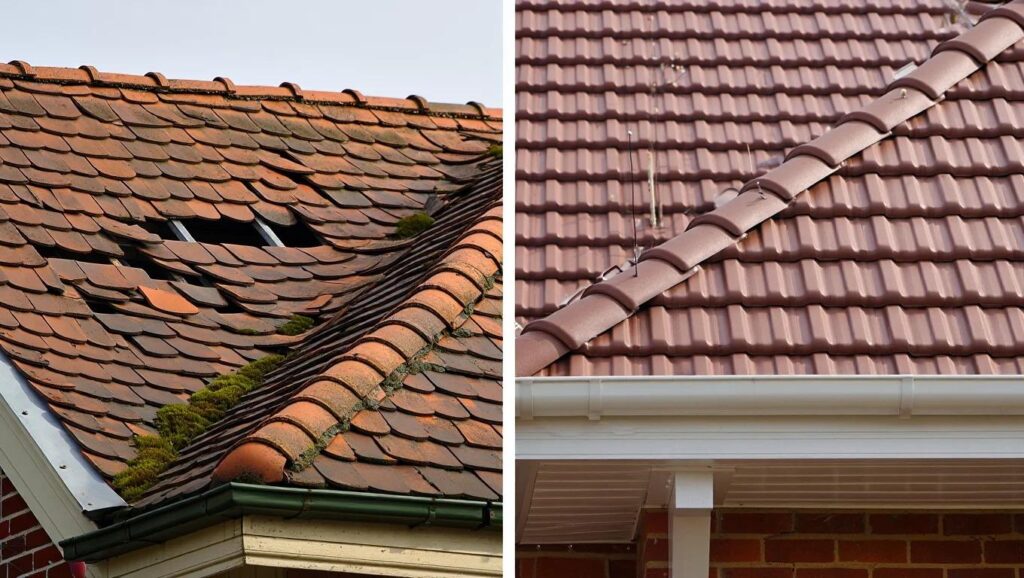
Choosing the right roof material requires careful consideration of multiple factors affecting performance and cost.
- Climate considerations: Select materials suited to local weather patterns, temperature ranges, and precipitation levels
- Structural capacity: Ensure the roof framing can support the tile weight without additional reinforcement requirements
- Budget planning: Balance upfront costs with long-term maintenance and replacement expenses
- Architectural style: Choose tiles that complement your home’s design and neighborhood character
- Fire resistance: Consider local fire risks and insurance requirements for fire-resistant materials
- Energy efficiency: Evaluate insulation properties and potential energy savings from different tile types
- Maintenance needs: Understand ongoing care requirements and associated costs for each material
- Installation complexity: Factor in labor costs and timeline for different tile installation methods
Consulting with roofing professionals helps ensure you select durable roof materials that meet all requirements.
Wrapping It Up
You now have a strong understanding of the various roof tile types and the unique benefits they offer.
From durability and cost to maintenance needs and environmental impact, you’re well-equipped to choose the best option for your home.
While Concrete, clay, slate, metal, composite, asphalt, and solar tiles each bring their distinct advantages, your decision will make a huge impact.
You also have specialty variations, maintenance tips, and key selection factors to support a smart investment.
By aligning your choice with home style, energy performance, and functional needs, you build more than a roof.
You build a lasting value and protection for your home.
For more expert advice on home exteriors, feel free to click here and explore other blogs that you might enjoy.

